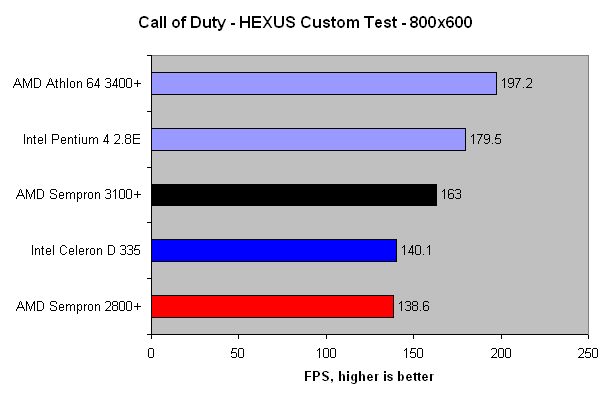3DMark2001SE, Comanche 4, Call of Duty
Gaming now, starting off with 3DMark2001SE b330.
Intel Celeron's Achilles Heel used to be gaming. Gaming is a cache-intensive activity. Thanks to 256KB of L2 cache and a number of behind-the-scenes improvements, the Celeron D 335 is easily able to match AMD's Sempron 2800+ in 3DMark2001SE. Sempron 3100+ gives a whole 1GHz clock speed away to the Celeron 335 but is still able to put 3,000 marks into Intel's budget CPU. I'm glad that Intel's decided to move away from using clock speed as the primary indicator of a processor's performance and rating. AMD's Athlon 64-derived Sempron 3100+ makes a mockery of pure MHz, doesn't it. A breakdown of the scores for the respective processors can be seen for Celeron D 335, Sempron 2800+, and Sempron 3100+, respectively.

On the balance of the first two gaming tests it seems as if AMD has been either very conservative with Sempron 3100+'s rating or overconfident with the 2800+'s. A 3400+ Clawhammer Athlon 64 shows one where top-end performance really lies.

A low-detail Call of Duty test brings all three budget processors within touching distance of each other. A comparative lack of cache counts against them.









